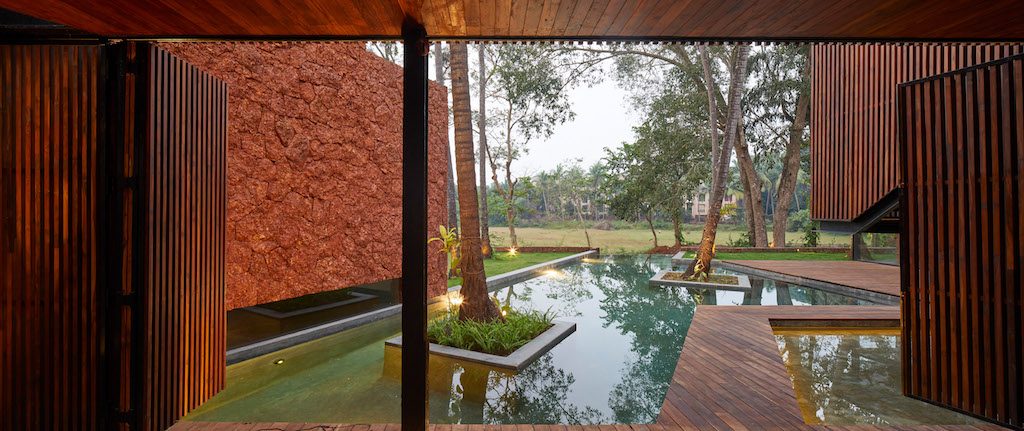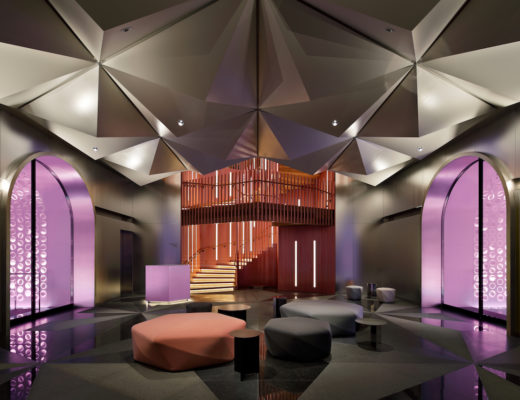Mumbai-based multidisciplinary practice Abraham John Architects has been at the forefront of sustainable building in India in various building sectors such as architecture, interior design, landscaping and urban planning. Founded in 1967 by Abraham John, the firm is now jointly led by him and his son, architect Alan Abraham (pictured above, to the left). With a diverse portfolio, work comprising luxury villas, high-end residences and offices, as well as hospitality and institutional projects, the firm is one of the leading sustainability-focused practices in India. The father and son duo (pictured above) have also designed several socially-driven projects such as earthquake and cyclone proof structures in various parts of India.
In an interview with DE51GN, Alan shares why sustainability is ingrained in Indian society, but upcoming public sector projects, especially in densely-populated Mumbai, are not in sync with sustainable practices.
Please cite some of the sustainable practices you have adopted in your projects?
Villa in the Palms in Goa is one of our projects in which we have tried our utmost to preserve what we could with the site by retaining the 19 towering old coconut trees that were already present on the site. Even though the client wanted them cut, we chose not to and instead built the villa around the trees, as inspiration and as an homage to the existing site conditions. Further, we used locally-sourced materials for most of the work and limited the footprint and the impact of the project on the site while at the same time creating an illusion of a larger space. In our design, we incorporated rainwater harvesting, provided for a solar roof (this was not built, unfortunately), worked with sun angles to achieve the best orientation of the building units, among other sustainable design strategies.
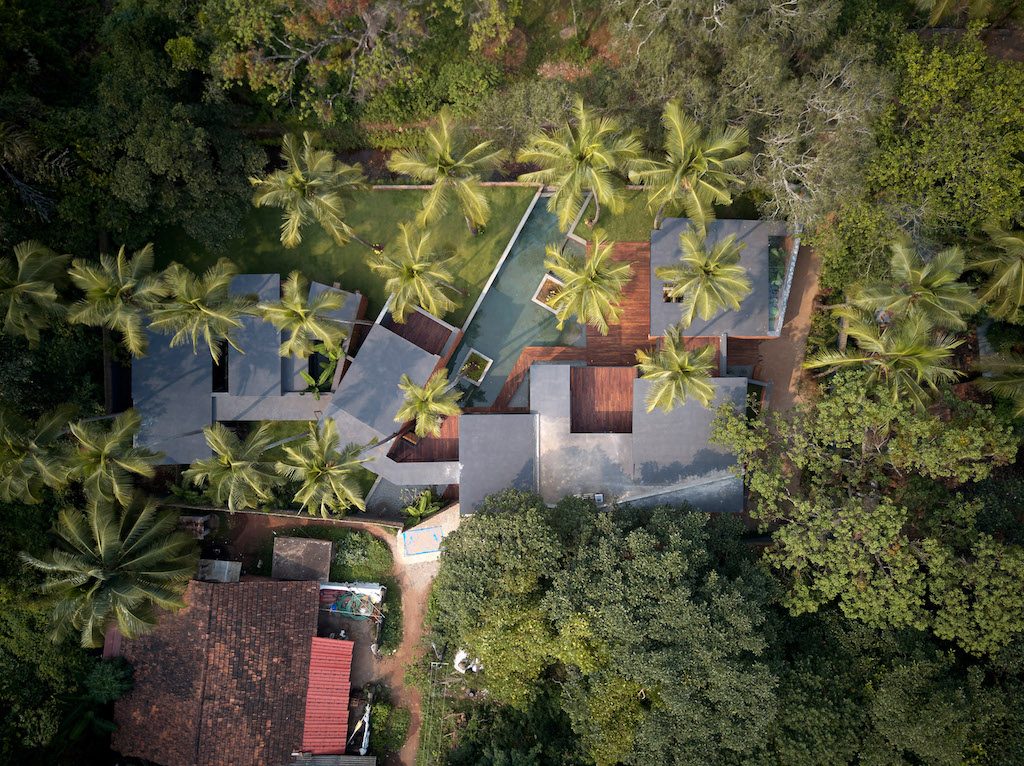
Located in Goa, India, Villa in the Palms by Abraham John Architects takes its name from the 19 coconut trees that have existed on the site for decades. To avoid cutting down the trees, the structure instead takes them into its fold. This was done by designing the house as fragmented units rather than a monolithic structure.
How can sustainability be contextualised in terms of the built environment in India, one of the most populated countries in the world?
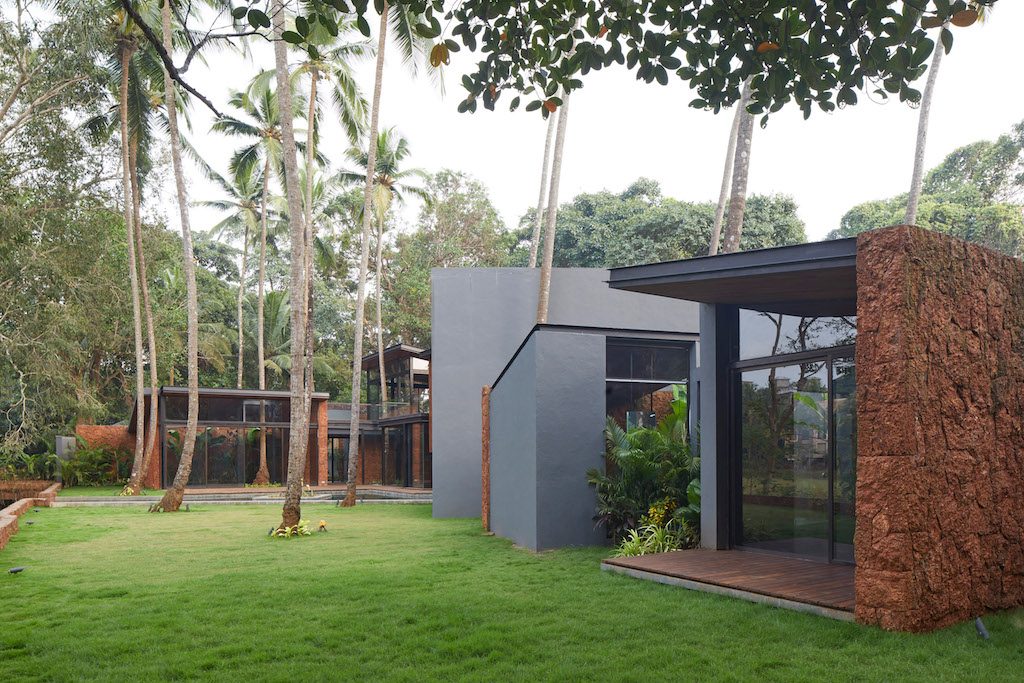
The laterite walls thermally and visually shield each room, maintaining privacy while providing the most suitable orientation for the best views of the northern field.
It’s easy to contextualise it precisely because of the problems that stare us in the face. Also, a lot of traditional building techniques use very sustainable practices. If India were to develop like the west, the planet would most probably be destroyed of its natural resources.
What are the most pressing issues for architects in India when it comes to sustainable building? How are you addressing them? Please cite specific examples.
It is difficult for architects to control the built form all by themselves – a lot more depends on the client and the project brief. Having said that, we can choose sustainable practices. The obvious issues would be water, electricity and waste disposal – at the infrastructure level that would affect most things. We must stop thinking of buildings as a one-point building activity and treat them more like babies who must age well and grow responsibly. So long term practices must be followed – including the reuse and recycling of buildings!
What kind of socio-cultural awareness is prevalent among people in India with regards to responsible usage within their built environment?
Indians are by their nature quite conscious of the environment – however with rapid urbanisation and the push for development, a lot of the lessons from the past are being left behind. This is where the danger lies, because with the need to industrialise we forget some of the basic concepts.
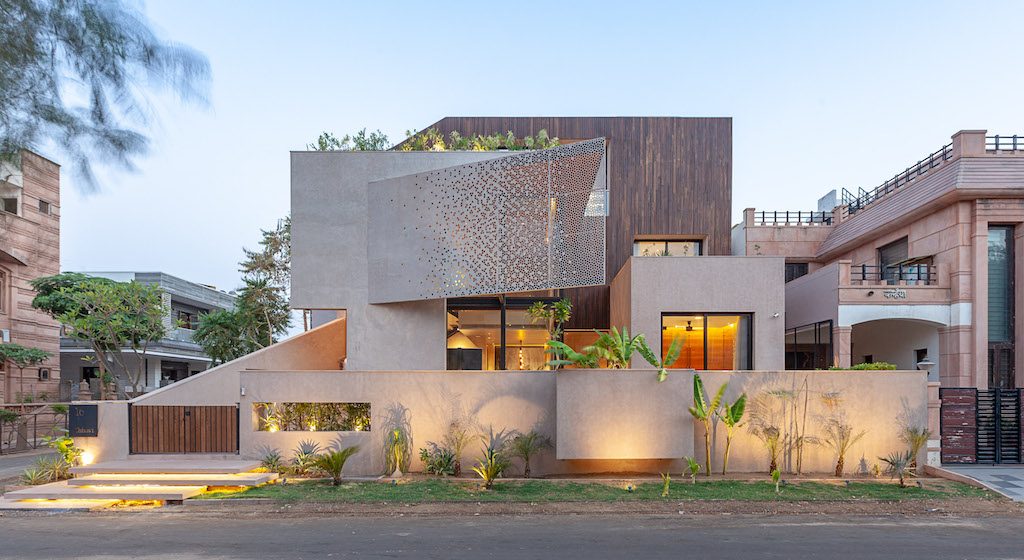
This private residence located in Jodhpur, Rajasthan has been designed according to vastu, which is the ancient Indian principles regarding space, sunlight, flow and function within buildings. Local Jodhpur stone was used extensively on the facade and interior spaces.
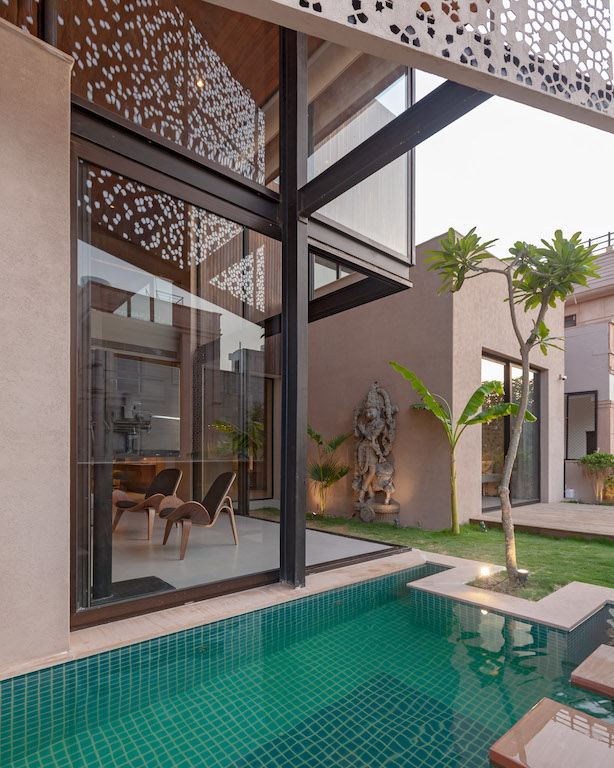
The filigree screen in the Jodhpur house provides protection from the sun and offers some privacy, as well as referencing traditional regional aesthetic element, known as jalis.
“If India were to develop like the west, the planet would most probably be destroyed of its natural resources.” – Alan Abraham, joint principal architect, Abraham John Architects
Is there any green building council and/or authority in India that establishes and regulates sustainable practices and building codes?
There is an organisation called GRIHA which is on par with LEED. They can certify buildings but this is not mandatory yet.
Is there a green building blueprint for dense Indian cities such as Mumbai which is expected to be hugely affected by the ongoing climate change crisis?
Actually quite the contrary; in its push to modernise Mumbai, the government is actually taking it backwards and projects are being implemented without any long term vision. Activists and environmentalists (even if pro-development) are being called anti-development and against the people. Most of the projects the government considers include building in the sea for private cars, or the removal of large chunks of forest land (which again links back for the need to capitalise) for the metro and bullet train projects and the environmental ministry gives the go-ahead as the government wants to be seen as pro-business.
What is your holistic view in this direction? How can Indian architects further build upon it?
We have to be responsible and make our individual choices. Unfortunately, there is no collective voice and this needs to be encouraged as this is important and can make a major difference.
Another challenge for a big country is the social housing problem. There are few architects in India who are known to be contributing to the social housing sector. What will drive this social objective and encourage more architects to take up this challenge?
If social housing is needed, it can be done. There’s no challenge there except to change the mindset of the people.

The carefully chosen limited palette of materials in the Monsoon Retreat House in Khandala, a resort town in a mountainous valley located four hours away from Mumbai, ensures consistency in design minimises maintenance and encourages sustainability.
What, according to you, is the biggest opportunity for Indian architects in the current scenario dominated by an economic downturn and the environmental crisis?
To forsee the future and through our insights and media of communication (drawings, models, 3D views) to propose better solutions that can benefit society at large.
Cite one or more examples of buildings in India that you reckon are well built in terms of sustainability, contextual building and cultural sensitivity.
The traditional buildings have had the advantage of local knowledge, craft and limited materials – these actually end up being the best buildings not only because the buildings are native but also contextually, culturally and environmentally sensitive. Buildings post Independence (including Le Corbusier’s Chandigarh buildings) are utilitarian but are more an impact of technology and time – they do not always respond well to their location or to the climate. Today, it is even more difficult to be sensitive, because we are now all world citizens!
Photo courtesy: Abraham John Architects
Photo credits:
Villa in the Palms, Goa: Edmund Sumner
Chhavi House, Jodhpur: Alan Abraham
Monsoon Retreat, Khandala: Alan Abraham


